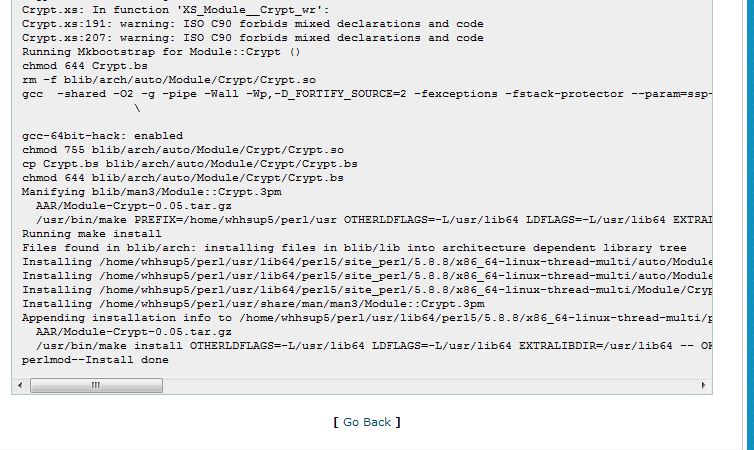

You can install this Perl in an alternate location like /opt/perl, or to make it clear it's for RT, even /opt/rt5/perl. You can then test just RT and not worry about possible side-effects on your system.
Install perl modules upgrade#
Having a Perl version installed specifically for RT gives you the flexibility to upgrade or install a new module if needed to add a new extension or address a bug.
Install perl modules update#
In doing so you take on the extra responsibility to patch that Perl if necessary, but you can plan this work as necessary rather than being surprised if RT has issues after a security package update is applied. To avoid having modules unexpectedly downgraded as described above, we typically recommend installing a separate Perl to run RT. The rt-test-dependencies tool provided in RT's sbin directory can help with this. Therefore, if you decide to use the vendor Perl on your system, you need to note somewhere that you'll need to upgrade RT's dependencies any time the system Perl packages are updated. Since a Perl update is likely to have many or all packaged Perl modules as dependencies, this means an update to the vendor Perl will restore all of the modules you upgraded to their previous version. Many packaging systems restore the system to the official packaged version of software when updates are applied.

Consider these factors before modifying your system Perl. Also, the system Perl is also often used by other utilities on the system and modifying the default Perl too heavily can introduce issues for these other applications which might rely on an older version of a module, for example. Occasionally vendors introduce their own changes to their packaged version of Perl or modules and these might create issues when running RT. If so, you can consider installing an RT-only version of Perl. If you have any IT policy requirements to only use vendor packaged versions of software, this might be an issue. When you run make testdeps as part of your RT installation, you'll likely find that the RT will require you to upgrade some of the dependent modules to newer versions than those provided in the vendor packages. You can run RT on the vendor Perl on your system as long as it meets the minimum version requirement. Default System PerlsĪll Linux and Unix-type variants come with a version of Perl installed and many provide Perl and many CPAN modules as packages for easier maintenance and management. We currently require at least version 5.10.1 which is old enough to be default on OSes from many years ago, but sufficiently new to support RT and the modules RT depends on. We try to maintain a reasonable timeframe for backward compatibility, but beyond a certain age, running old versions of Perl is no longer safe or even possible with modern applications. Perl has been around for a long time, so many different versions are installed on systems everywhere. This document reviews some of the options and pros and cons of different approaches. RT runs on Perl and there are many different approaches to installing and maintaining your Perl installation. Permission Problems with Installed Perl Modules.


 0 kommentar(er)
0 kommentar(er)
